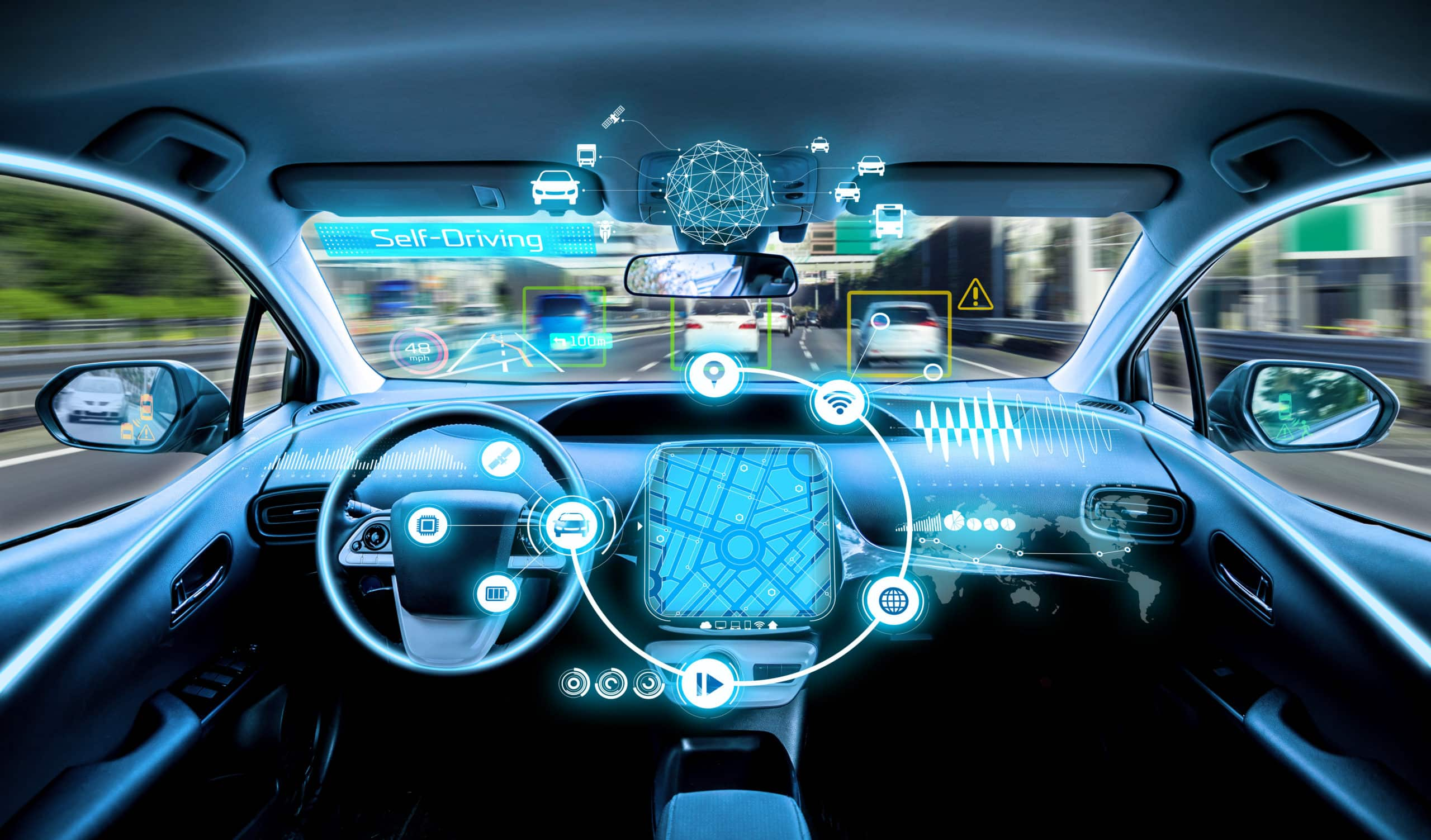Introduction
Autonomous vehicles (AVs) are revolutionizing the transportation industry in 2025, offering enhanced safety, efficiency, and sustainability. With advancements in AI, 5G, and edge computing, self-driving technology is becoming more reliable and widespread. This blog explores the key applications, benefits, challenges, and future trends shaping the evolution of autonomous vehicles.
What Are Autonomous Vehicles?
Autonomous vehicles are self-driving cars, trucks, and public transit systems that use AI, sensors, and real-time data processing to navigate roads without human intervention.
Key Technologies Powering AVs:
- Artificial Intelligence (AI): Machine learning for decision-making and object recognition.
- Lidar & Radar Sensors: Real-time mapping and obstacle detection.
- 5G & V2X Communication: Vehicle-to-vehicle (V2V) and vehicle-to-infrastructure (V2I) data exchange.
- Edge Computing: Reducing latency for faster responses and improved safety.
Key Applications of Autonomous Vehicles in 2025
1. Self-Driving Cars & Ride-Sharing
- AI-powered ride-hailing services reduce congestion and improve accessibility.
- Fully autonomous taxi fleets (robotaxis) enhance urban mobility.
- Personalized AI-driven navigation systems for optimized route planning.
Example: Companies like Tesla, Waymo, and Cruise are expanding their autonomous taxi networks.
2. Autonomous Trucks & Logistics
- Self-driving freight trucks streamline supply chains.
- AI-powered fleet management systems optimize fuel consumption.
- Automated last-mile delivery vehicles reduce operational costs.
Example: Amazon, UPS, and Daimler are investing in AV logistics to improve delivery efficiency.
3. Public Transport & Smart Cities
- AI-driven autonomous buses and shuttles improve urban mobility.
- Self-driving metro trains reduce energy consumption and enhance safety.
- 5G-powered smart intersections enable AV traffic coordination.
Example: Dubai and Singapore have deployed autonomous shuttles for public transportation.
4. Agriculture & Industrial Automation
- Self-driving tractors and harvesters enhance precision farming.
- AI-controlled logistics improve factory-to-market supply chains.
- Autonomous mining vehicles increase worker safety and efficiency.
Example: John Deere and Caterpillar use AVs for efficient, sustainable farming and mining operations.
5. Emergency & Law Enforcement Vehicles
- AI-driven ambulances reduce response times.
- Autonomous police vehicles enhance patrolling and crime prevention.
- AI-powered fire trucks optimize emergency route planning.
Example: Cities like Los Angeles and Tokyo are testing AV emergency fleets.
Benefits of Autonomous Vehicles
1. Enhanced Safety & Accident Reduction
- AI-driven AVs eliminate human errors, reducing road accidents.
- Advanced sensor systems prevent collisions in real time.
2. Reduced Traffic Congestion
- AI-powered navigation improves traffic flow and reduces gridlocks.
- Vehicle-to-infrastructure (V2I) communication optimizes traffic lights and lanes.
3. Lower Carbon Emissions & Sustainability
- AVs improve fuel efficiency and adopt electric vehicle (EV) technology.
- AI-optimized route planning minimizes unnecessary fuel consumption.
4. Increased Accessibility & Mobility
- AVs provide mobility solutions for elderly and disabled individuals.
- Self-driving taxis enhance urban and rural connectivity.
5. Cost Savings for Businesses & Consumers
- Lower insurance premiums due to reduced accident risks.
- Fleet automation reduces labor costs for logistics and ride-sharing services.
Challenges in Autonomous Vehicle Adoption
1. Regulatory & Legal Barriers
- Governments require extensive safety testing and approvals.
- Insurance policies must adapt to autonomous vehicle liability concerns.
2. Cybersecurity Risks & Data Privacy
- Hacking threats on AV networks require robust cybersecurity measures.
- Data privacy concerns arise from continuous AV monitoring and tracking.
3. High Development & Infrastructure Costs
- AV R&D is expensive, with substantial investments needed for sensors, AI, and connectivity.
- Smart road infrastructure upgrades are required for seamless AV operation.
4. Public Trust & Adoption Resistance
- Consumers have concerns over safety, reliability, and control.
- Governments and companies must educate the public on AV benefits and security.
Future Trends in Autonomous Vehicles (2025 & Beyond)
1. AI-Enhanced Autonomous Driving
- Neural networks will enable real-time learning and decision-making.
- AI-driven predictive analytics improve route planning and hazard detection.
2. Fully Autonomous Public Transport
- Major cities will expand self-driving bus and metro networks.
- Governments will invest in smart road infrastructure and AV-friendly policies.
3. Expansion of Autonomous Delivery Services
- Drone deliveries and AV-powered last-mile logistics will become mainstream.
- AI-powered autonomous grocery deliveries will enhance e-commerce efficiency.
4. Integration of 6G & Smart Cities
- 6G networks will further enhance real-time AV communication.
- Smart highways with embedded sensors will enable seamless AV navigation.
5. Ethical AI & Decision-Making Regulations
- Governments will define moral guidelines for AV accident scenarios.
- AI ethics committees will ensure fair decision-making in autonomous driving.
Conclusion
Autonomous vehicles in 2025 are reshaping transportation, logistics, and urban mobility, driving advancements in safety, efficiency, and sustainability. As AI, 5G, and edge computing continue to evolve, AVs will redefine how we move and interact with smart cities.
What’s Next?
Are you ready for the autonomous vehicle revolution? Stay updated on self-driving innovations, AV regulations, and smart mobility trends.








